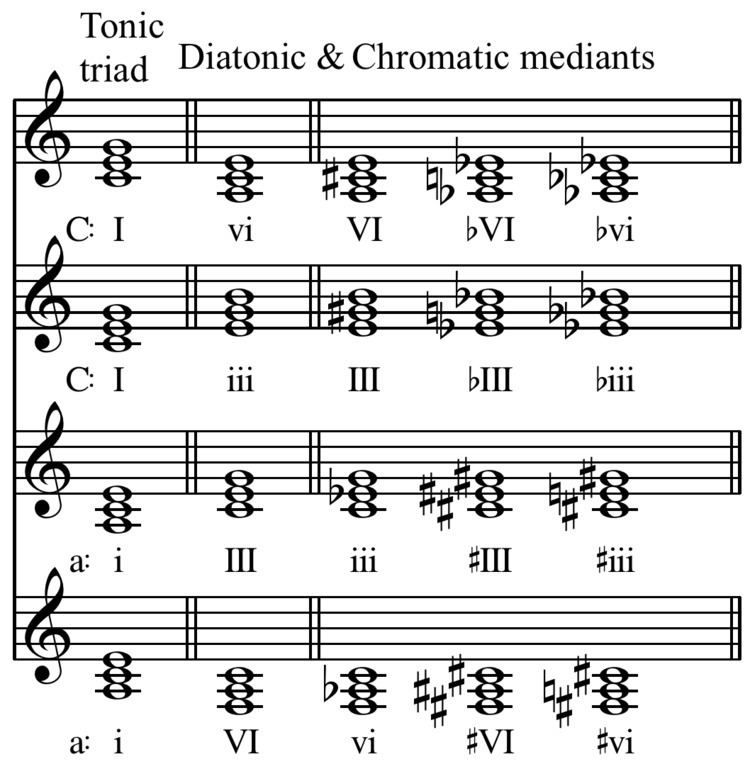 | ||
In music, chromatic mediants, "are altered mediant and submediant chords." A chromatic mediant relationship is a relationship between two sections and/or chords whose roots are related by a major third or minor third, contain one common tone, or share the same quality, i.e. major or minor. For example, in the key of C major the diatonic mediant and submediant are E minor and A minor respectively. Their parallel majors are E major and A major. The mediants of the parallel minor of C major (C minor) are E♭ major and A♭ major, and their parallel minors are E♭ minor and A♭ minor, totaling four chromatic mediants for that key. Thus an E major chord is one of six chromatic mediant chords in C major and the keys of C major and E major share a chromatic mediant relationship.
Chromatic mediants are usually in root position, may appear in either major or minor keys, usually provide color and interest while prolonging the tonic harmony, proceed from and to the tonic or less often the dominant, sometimes are preceded or followed by their own secondary dominants, or sometimes create a complete modulation.
Some chromatic mediants are equivalent to altered chords, for example ♭VI is also a borrowed chord from the parallel minor, VI is also a secondary dominant of ii (V/ii), and III is V/vi, with context and analysis revealing the distinction.
Chromatic mediant chords were rarely used during the baroque and classical periods, though the chromatic mediant relationship was occasionally found between sections, but the chords and relationships became much more common during the romantic period.
Allen Forte describes the even more distant "doubly-chromatic mediant" relationship shared by two chords of the opposite mode, with roots a third apart, and no common tones; for example C major and A♭ minor or C major and E♭ minor.
